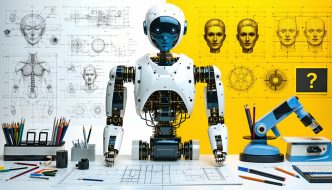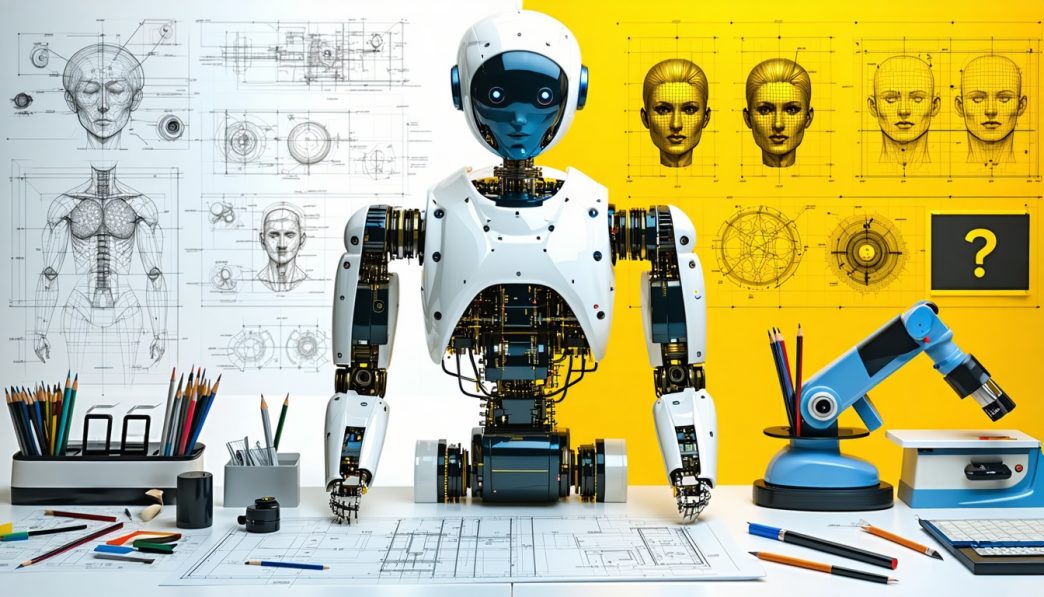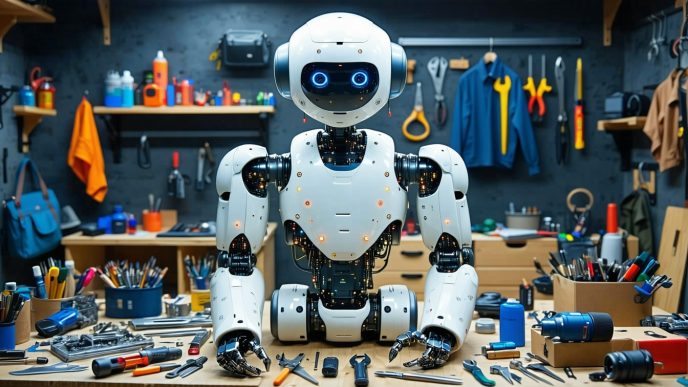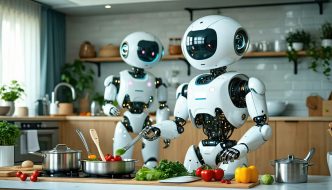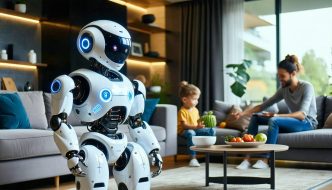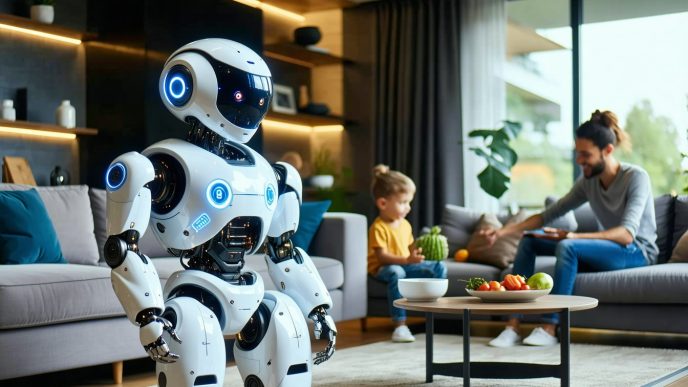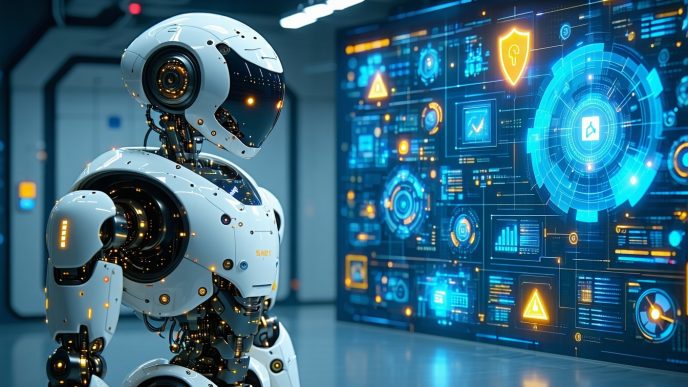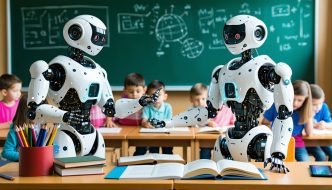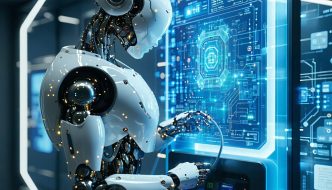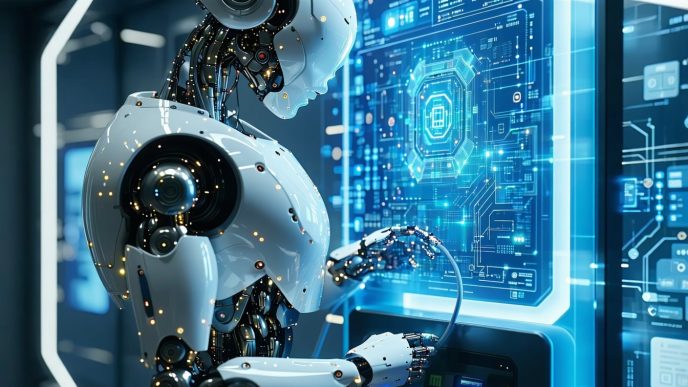Introduction to Humanoid Robots
Defining Humanoid Robots
Humanoid robots are engineered to resemble humans in both appearance and behavior. These robots are designed with a head, torso, arms, and legs, typically mimicking the human form. They can be programmed to perform a variety of tasks, ranging from basic household chores to more complex social interactions.
The primary goal in creating humanoid robots is to enhance their ability to interact with humans naturally. This involves not just physical features but also cognitive capabilities that allow for communication and understanding of human emotions and intentions. For more insights into this field, explore our article on humanoid robots for home use.
Importance of Humanoid Robots
Humanoid robots have significant potential in various sectors. Their design enables them to engage closely with humans, making them suitable for roles in healthcare, education, and companionship.
Here are key areas where humanoid robots are making an impact:
| Sector | Application |
|---|---|
| Healthcare | Assisting with patient care and rehabilitation. |
| Education | Providing tutoring and interactive learning experiences. |
| Home Assistance | Performing daily chores and enhancing quality of life. |
| Security | Acting as surveillance aids and contributing to safety measures. |
| Companionship | Offering support and interaction for the elderly and isolated individuals. |
The development of humanoid robots offers several advantages. They can enhance efficiency in various tasks, improve accessibility for those with disabilities, and provide companionship to those in need.
As robotics technology advances, so does the complexity of humanoid robot design. This brings challenges, particularly in achieving effective movement and interaction capabilities. For a closer look at these design difficulties, refer to the section on humanoid robot design challenges.
Challenges in Designing Humanoid Robots
Creating humanoid robots is a complex endeavor. Designers face multiple challenges related to movements, stability, sensor integration, and energy consumption. Below, these issues are outlined in detail.
Complex Human-Like Movements
Mimicking human movement is essential for humanoid robots. Natural biomechanics involve numerous joints and muscles working in unison. For a robot to replicate this, it must be equipped with advanced motion control and articulation.
The following table breaks down some of the key features necessary to achieve human-like movements:
| Feature | Description |
|---|---|
| Degrees of Freedom | Required for a wide range of motion |
| Motion Algorithms | To simulate smooth actions |
| Responsive Actuators | For quick and precise movements |
| Real-Time Feedback Systems | To adjust movements based on environment |
Creating systems that can seamlessly manage these components is a significant challenge in the field of humanoid robot locomotion systems.
Balancing and Stability Issues
Balancing humanoid robots is another crucial challenge. Their design must ensure stability while moving or standing still. Factors like weight distribution and center of gravity play a significant role.
The table below summarizes considerations for achieving balance and stability:
| Aspect | Considerations |
|---|---|
| Weight Distribution | Evenly spread across the body |
| Center of Gravity | Should be low for better stability |
| Feedback Mechanisms | Sensors to detect and correct imbalances |
| Fall Recovery Systems | To regain balance after a misstep |
Addressing these factors is vital for creating safe and functional robots suitable for various applications.
Sensor Integration Challenges
Humanoid robots require a sophisticated array of sensors to interact with their surroundings. These sensors must enable perception similar to that of humans, which presents several integration hurdles.
Key sensor types and challenges include:
| Sensor Type | Challenge |
|---|---|
| Vision Sensors (Cameras) | Understanding visual information |
| Proximity Sensors | Detecting nearby objects |
| Touch Sensors | Interpreting tactile feedback |
| Spatial Awareness Sensors | Aiding in navigation and movement |
Successful integration of these sensors is crucial for enabling effective humanoid robot navigation and overall functionality.
Energy Efficiency Dilemma
Energy consumption is a persistent issue in humanoid robot design. These robots often require substantial power to operate their complex systems. Therefore, achieving an efficient energy balance is crucial for their sustainability and practicality.
The table below illustrates various energy aspects to consider:
| Energy Aspect | Consideration |
|---|---|
| Power Source | Battery capacity and rechargeability |
| Energy Consumption | Balancing functionality with energy use |
| Performance Needs | Ensuring long operational times |
| Energy Recovery Systems | Systems to recuperate energy during use |
Designing humanoid robots with a focus on energy efficiency will improve their viability for real-world applications, whether in homes or industries.
Cognitive Functionality Hurdles
Designing humanoid robots comes with significant challenges, particularly in the realm of cognitive functionality. These robots must replicate various aspects of human intelligence, learning, and environmental interaction.
Emulating Human Intelligence
One of the core challenges in humanoid robot design is the need to emulate human intelligence. This includes not only basic tasks but also complex decision-making and emotions. Achieving this requires advanced algorithms and computing power, which are often still in development.
| Feature | Description |
|---|---|
| Natural Language Processing | Ability to understand and respond to human language. |
| Problem-Solving Capabilities | Skills to analyze situations and devise strategies. |
| Emotion Recognition | System to identify and react to human emotions through facial and vocal cues. |
Advanced models, such as those seen in the neuralink and humanoid integration, are being explored to improve cognitive functionality, allowing humanoid robots to better understand and interact with humans.
Implementing Learning Capabilities
To adapt to various environments and tasks, humanoid robots must possess learning capabilities. They need to analyze their interactions and experiences to improve their responses over time. This implementation of machine learning techniques can be complex and costly.
| Learning Type | Description |
|---|---|
| Supervised Learning | Robots learn from labeled datasets. |
| Unsupervised Learning | Robots identify patterns in unlabelled data. |
| Reinforcement Learning | Robots learn optimal actions through trial and error. |
The integration of these learning techniques can significantly enhance the functionality of humanoid robots. Developers often refer to systems that apply such methodologies, including examples like ai models in humanoid robots.
Interacting with the Environment
For humanoid robots to function effectively, they need to interact seamlessly with their environment. This includes navigating spatial obstacles, perceiving surroundings using sensors, and understanding human behaviors. Designing effective sensor systems can simplify this interaction but presents its own set of challenges.
| Sensor Type | Functionality |
|---|---|
| Cameras | Visual input for recognition tasks. |
| Proximity Sensors | Detecting nearby objects to avoid collisions. |
| Microphones | Understanding and processing sound. |
The use of advanced humanoid robot sensors is vital in facilitating these interactions. By combining multiple sensor types, developers are better positioned to create robots that can navigate complex environments while maintaining reliable coordination and safety.
The cognitive functionality hurdles in humanoid robot design continue to present challenges as researchers and engineers seek to create robots capable of genuine human-like interactions and learning.
Designing for Human Interaction
Creating humanoid robots that can effectively interact with humans involves addressing several key areas. These include mimicking emotional expression, interpreting social cues, and ensuring safety during interactions.
Mimicking Emotional Expression
Humanoid robots need to convey emotions to facilitate effective communication with humans. This involves developing facial expressions and body language that are recognizable and relatable. Advanced technology is utilized to create expressive faces that can show joy, sadness, surprise, and other emotions.
| Emotion | Key Facial Features | Example Robots |
|---|---|---|
| Happiness | Smile, raised eyebrows | ameca robot by engineered arts |
| Sadness | Downturned mouth, lowered eyebrows | xiaomi cyberone |
| Surprise | Wide eyes, raised eyebrows | sanctuary ai phoenix |
| Anger | Furrowed brows, clenched jaw | apptronik apollo |
The development of emotional recognition systems enhances the robot’s ability to respond appropriately, making interactions more natural.
Deciphering Social Cues
Humanoid robots must also be capable of understanding and interpreting social cues. This includes recognizing gestures, tone of voice, and contextual nuances that signal different social interactions. The integration of sensors and advanced algorithms allows robots to analyze these cues and react accordingly.
| Social Cue | Detection Mechanism | Example Applications |
|---|---|---|
| Hand Gestures | Vision sensors | humanoid robot navigation |
| Voice Tone | Microphones with AI algorithms | voice interfaces in humanoid robots |
| Facial Expressions | Camera-based facial recognition | emotion recognition in robots |
By evaluating these social signals, humanoid robots can engage in more meaningful interactions with users, which is essential for applications in fields like elder care and education.
Ensuring Safety in Human Interaction
Safety is a crucial aspect of humanoid robot design, especially when engaging directly with people. Designers need to implement various safety features to prevent accidents and ensure secure interactions.
| Safety Feature | Description | Example Implementations |
|---|---|---|
| Soft Edges and Materials | Minimizes injury risks | humanoid robot safety systems |
| Collision Detection Sensors | Stops movement when an obstacle is detected | humanoid robots in healthcare |
| Emergency Shut-off Mechanisms | Allows immediate power cut in dangerous situations | humanoid robots for home use |
Integrating these safety features is vital for building trust between humans and robots, facilitating broader acceptance and use of humanoid robots in various settings.
Ethical Considerations and Challenges
As humanoid robots become more integrated into various aspects of human life, several ethical considerations arise. These concerns include privacy issues, autonomous decision-making challenges, and broader moral and legal implications.
Privacy Concerns
Humanoid robots often require data collection to enhance functionality and improve user interaction. This data collection can lead to significant privacy risks. The robots may gather personal information, monitor user behavior, or even capture visual and audio data. It is essential to establish clear guidelines on how this data is managed and stored to prevent misuse.
To illustrate the concerns, consider the following table outlining potential privacy issues related to humanoid robots:
| Privacy Concern | Potential Impact |
|---|---|
| Data collection without consent | Invasion of personal privacy |
| Unauthorized data sharing | Exposure of sensitive information |
| Security vulnerabilities | Risk of hacking and data breaches |
Robots like Xiaomi CyberOne and Agility Digit Robot may utilize sensors that can inadvertently breach privacy if not properly managed.
Autonomous Decision-Making
The ability of humanoid robots to make autonomous decisions presents ethical challenges. As robots gain greater independence, it is crucial to define the parameters within which they operate. These parameters must include ethical guidelines that govern actions, especially when they could impact human safety or welfare.
The following table summarizes some consequences of autonomous decision-making in humanoid robots:
| Autonomous Decision-Making Issue | Potential Consequence |
|---|---|
| Misinterpretation of data | Harmful actions towards humans |
| Lack of accountability | Legal ambiguity in case of incidents |
Humanoid robots like the Sanctuary AI Phoenix may face challenges in making decisions that align with human ethics and expectations.
Moral and Legal Implications
The integration of humanoid robots also introduces various moral and legal implications. Determining the liability for actions taken by robots is complex. Questions of personhood, rights, and responsibilities arise, especially in cases where robots act on their own.
For instance, if a humanoid robot like the Apptronik Apollo causes an accident or injury, who would be held responsible? This question extends beyond individual instances to encompass broader societal issues, such as labor displacement and the role of robots in various fields.
| Moral and Legal Consideration | Example Scenario |
|---|---|
| Liability in robot actions | Robot injures a human |
| Employment impacts | Job loss due to automation |
These ethical considerations highlight the need for ongoing discussions around the development of robots to ensure their integration benefits society and respects human rights. The consideration of ethics in robotic design and deployment is a crucial part of addressing the various humanoid robot design challenges.
